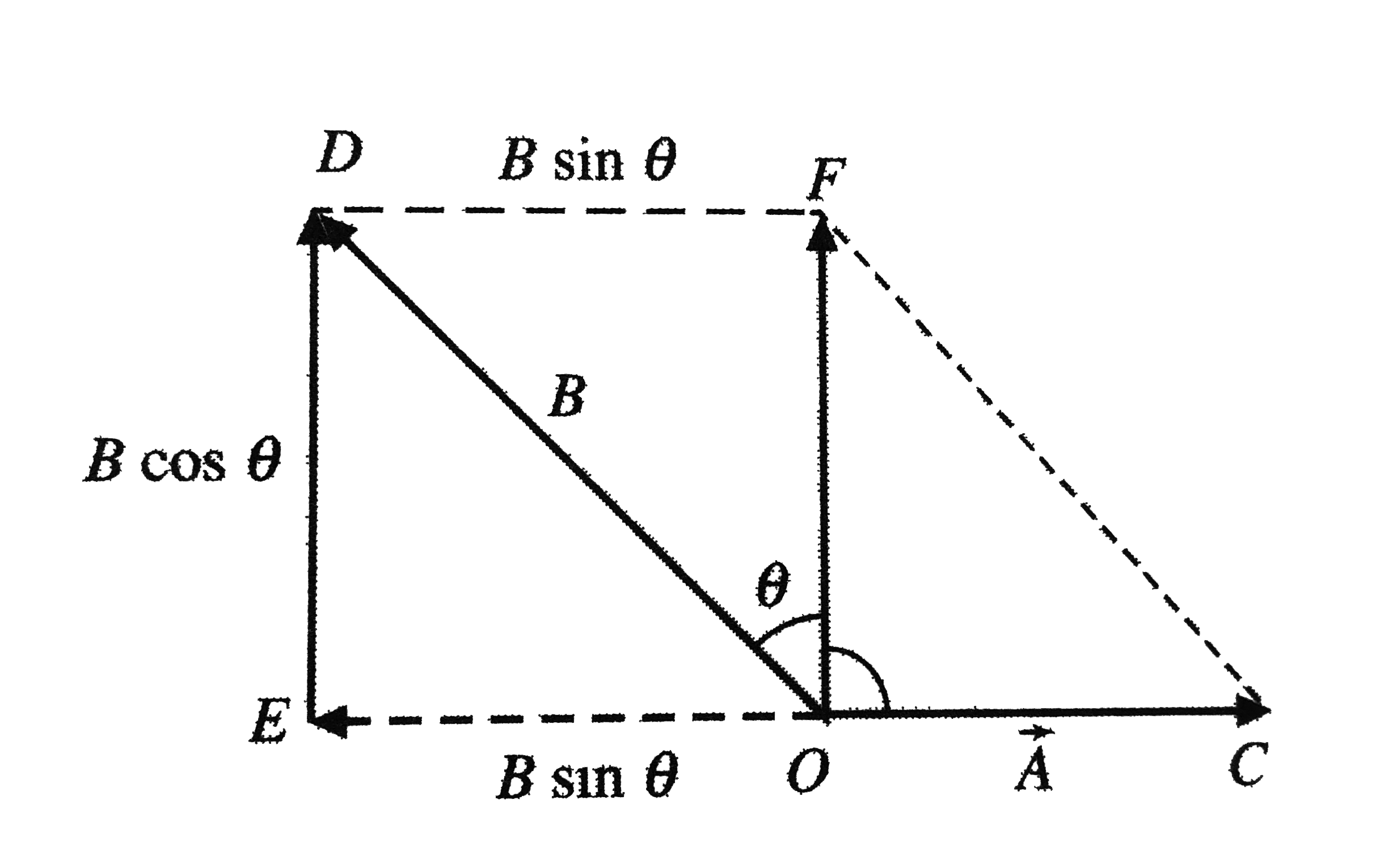Resultant of two vectors one having magnitude twice of other is perpendicular to the smaller vector then find the angle ( in∘) between the vectors ?
The correct Answer is:120
To solve the problem, we need to find the angle between two vectors, where one vector (let's call it vector A) has a magnitude that is half of the other vector (vector B), and the resultant of these two vectors is perpendicular to the smaller vector (vector A).
1. Define the Vectors:
- Let the magnitude of vector A be A.
- Since vector B has twice the magnitude of vector A, we have B=2A.
2. Understanding the Resultant:
- The resultant vector R of vectors A and B is given by the vector addition formula. Since the resultant is perpendicular to vector A, we can use the properties of right triangles.
3. Using the Cosine Rule:
- According to the cosine rule in a triangle formed by the vectors, we have:
R2=A2+B2+2ABcos(θ)
- Here, R is the resultant, θ is the angle between vectors A and B, and B=2A.
4. Substituting Values:
- Substitute B=2A into the equation:
R2=A2+(2A)2+2A(2A)cos(θ)
R2=A2+4A2+4A2cos(θ)
R2=5A2+4A2cos(θ)
5. Using the Perpendicular Condition:
- Since the resultant R is perpendicular to vector A, we know that R⋅A=0. This means:
R2=B2−A2
- Substitute B=2A:
R2=(2A)2−A2=4A2−A2=3A2
6. Equating the Two Expressions for R²:
- From the previous steps, we have two expressions for R2:
3A2=5A2+4A2cos(θ)
- Rearranging gives:
3A2−5A2=4A2cos(θ)
−2A2=4A2cos(θ)
- Dividing both sides by 4A2:
cos(θ)=−12
7. Finding the Angle:
- The angle θ that satisfies cos(θ)=−12 is:
θ=120∘(or θ=240∘, but we consider the acute angle here)
Final Answer:
The angle between vector A and vector B is 120∘.
- Let the magnitude of vector A be A.
- Since vector B has twice the magnitude of vector A, we have B=2A.
- The resultant vector R of vectors A and B is given by the vector addition formula. Since the resultant is perpendicular to vector A, we can use the properties of right triangles.
- According to the cosine rule in a triangle formed by the vectors, we have:
R2=A2+B2+2ABcos(θ)
- Here, R is the resultant, θ is the angle between vectors A and B, and B=2A.
- Substitute B=2A into the equation:
R2=A2+(2A)2+2A(2A)cos(θ)
R2=A2+4A2+4A2cos(θ)
R2=5A2+4A2cos(θ)
- Since the resultant R is perpendicular to vector A, we know that R⋅A=0. This means:
R2=B2−A2
- Substitute B=2A:
R2=(2A)2−A2=4A2−A2=3A2
- From the previous steps, we have two expressions for R2:
3A2=5A2+4A2cos(θ)
- Rearranging gives:
3A2−5A2=4A2cos(θ)
−2A2=4A2cos(θ)
- Dividing both sides by 4A2:
cos(θ)=−12
- The angle θ that satisfies cos(θ)=−12 is:
θ=120∘(or θ=240∘, but we consider the acute angle here)
The angle between vector A and vector B is 120∘.
Topper's Solved these Questions
Similar Questions
Resultant of two vector of equal magnitude A is
View SolutionThe resultant of two forces, one double the other in magnitude is perpendicular to the smaller of the two forces. The angle between the two forces is
View SolutionIf the resultant of two forces is equal in magnitude to one of the components and perpendicular to it direction, find the other components using the vector method.
View SolutionTwo vector A and B have equal magnitudes. Then the vector A+B is perpendicular to
View SolutionIf magnitude of the resultant of two vectors equal of magnitude, is equal to the magnitude of either of the vectors, what is the angle between them ?
View SolutionThe algebraic sum of two co - initial vectors is 16 units. Their vector sum is 8 units and the resultant of the vectors are perpendicular to the smaller vector. Then magnitudes of the two vectors are -
View SolutionThe resultant of two vectors →A and →B is perpendicular to the vector →A and its magnitude is equal to half of the magnitude of the vector →B. Find out the angles between →A and →B.
 .
.
View SolutionTwo vectors of equal magnitude are acting through a point. The magnitude of resultant is equal to the magnitude of either vectoe. Find the angle between the vectors.
View SolutionIf the magnitudes of two vectors are 3 and 4 and magnitude of their scalar product is 6 what is the angle between the vectors ?
View SolutionThe magnitude of the sum of two vectors is equal to the difference in their magnitudes. What is the angle between vectors?
View Solution
